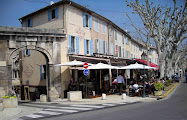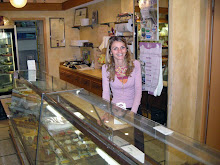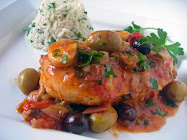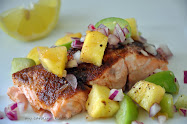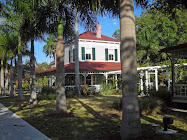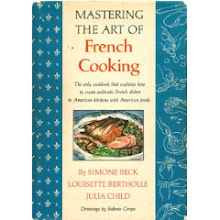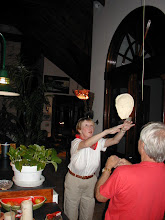Mention toasted pecans or cheese straws and all of a sudden I’m magically whisked to the South. Both are quintessentially southern appetizers served at parties throughout the South before dinner as cocktail nibbles with drinks. Why it wouldn’t be a party down south without them.
This recipe is from a delightful new cookbook – Southern My Way, Simple Recipes, Fresh Flavors, written by Gena Knox. I grew up in the south, but I also support a healthy diet and lifestyle. There’s more to life than fried chicken and butter, butter, butter. And Gena proves it with her modern take on southern classics.
I can’t wait until peach season so I can try her Georgia Caprese Salad, a southern spin on the Italian classic Caprese salad, made with fresh local peaches. Herbed salmon with cucumber salad looks particularly healthy and the recipe was inspired by a classic cookbook that’s been a favorite of southern cooks for ages – Charleston Receipts.
Now back to the pecans and some tips. Buy the freshest available. When I was a girl my sister and I picked pecans off of the ground from the trees in the backyard and our parents shelled them with a big old fashioned contraption that doubled as a door stop. Now I buy the current crop from Georgia. Remember that nuts can burn very, very easily when you’re toasting them, so keep a good eye on them and don’t wander too far from the kitchen while they’re in the oven. Also, toasted pecans are very, very addictive. Make plenty – some for the cook to nibble and lots for your guests. They can disappear from the cocktail table “before you turn around” as they say down south.
Southern Toasted Pecans
Adapted from “Southern My Way” by Gena Knox – yield about 4 cups
4 tablespoons unsalted butter, melted and cooled slightly
3 tablespoons Worcestershire sauce
¾ teaspoon kosher salt
¼ teaspoon cayenne pepper or more to taste
1 pound fresh pecan halves, preferably from Georgia – they’re the best
Large grain sea salt or French fleur de sel for dusting the pecans when they’re taken right out of the oven
Preheat the oven to 300 degrees F. Combine melted butter, Worcestershire sauce, kosher salt and cayenne pepper in a small bowl. Pour the butter mixture over the pecans and toss well to coat. Spread the nuts on a rimmed baking sheet, taking care to leave them in a single layer. Roast the pecans on the middle rack of the oven for 30 to 35 minutes, stirring every 10 minutes and checking to see that they are not burning, until pecans are toasted to a light brown. Each time you stir, be sure they are in a single layer again.
When they are done, remove from the oven and spread on wax paper. Dust the pecans with a healthy sprinkle of grainy sea salt or French fleur de sel and let cool. Store pecans in an airtight covered container at room temperature.
As I said, they're addictive, so make more than you think you need. Especially if you or your husband have a tendency to nibble before the guests arrive as we are inclined to do from time to time.
Speaking of addictive, I’ve become addicted to Pinterest. Pinteret is a virtual pinboard that allows you to organize and share all of the fabulous things you find on the web. I’ve had great fun viewing pinboards created by others, browsing for decorating ideas for our condo or new healthy recipes to try. As you might imagine, my pinboards include fabulous dining rooms, “to die for” kitchens, southern style porches and verandas, and of course some great food thrown in. Come join the party – there’s a red link in the sidebar to the right.
 |
| Southern style porch via Pinterest |
Pinterest is as addictive as a bowl of southern toasted pecans, but don’t say I didn’t warn you. This recipe for toasted pecans will be linked to Miz Helen’s Country Cottage Full Plate Thursday and Foodie Friday at Designs by Gollum. Pull up a chair and join us.





















